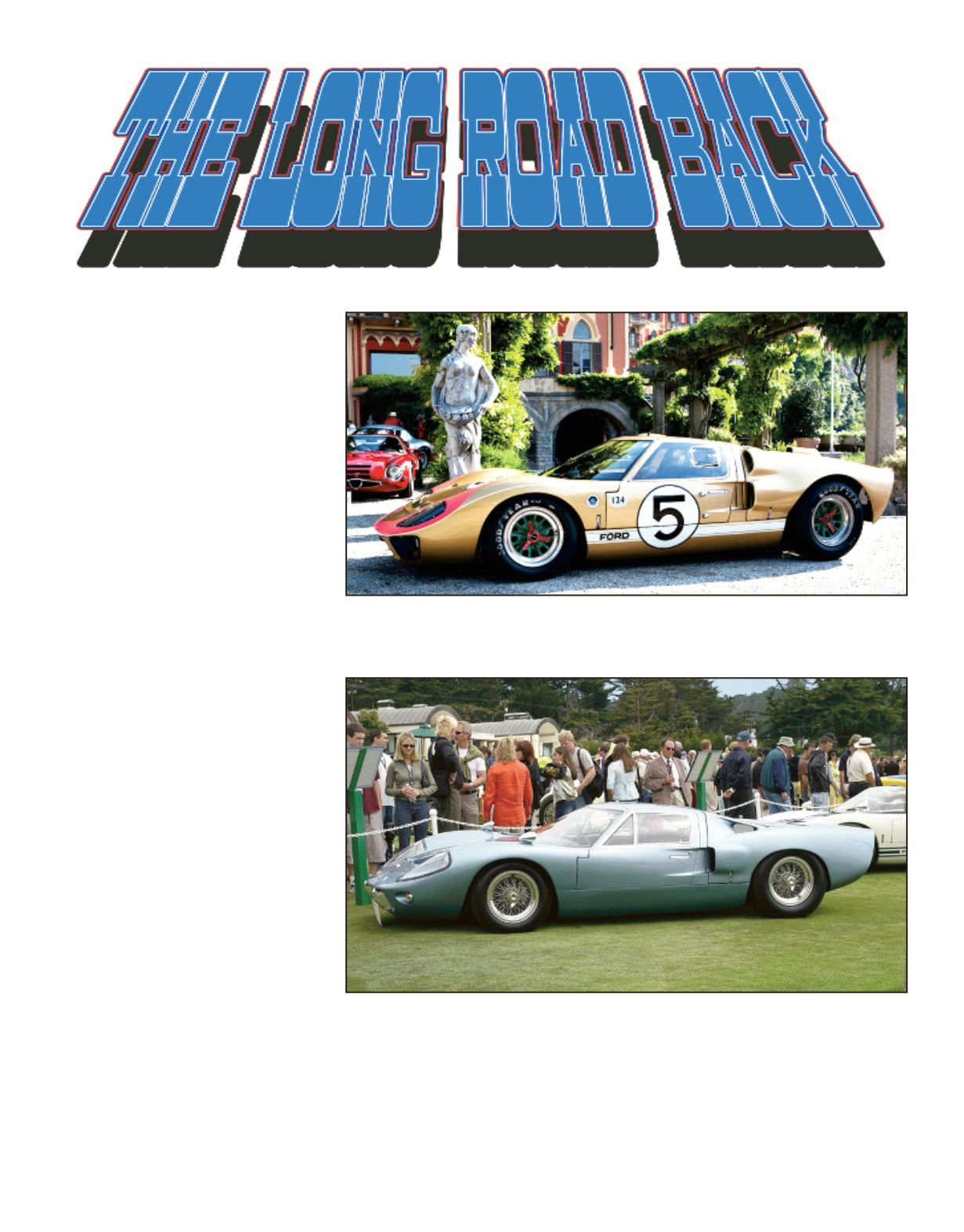

Well, race fans, it’s been fifty
years, but Ford is finally planning a
new assault on LeMans:
In June of 2015, much to the de-
light of Ford performance enthusiasts
around the world, Ford announced
that they would be returning to the
track with an all new Ford GT. They
might not repeat the incredible feat of
the magical 1-2-3 finish of 1966, or the
amazing repeat wins in 1967, 1968,
and 1969, but they would make the
2016 running of the 24 Heures du
Mans a most memorable event.
Back in the sixties “Hank the
Deuce” (more formally known as
Henry Ford II, Ford’s CEO, the oldest
son of Edsel Ford and oldest grandson
of Henry Ford), was interested in pur-
chasing Ferrari. After being rebuffed
by Enzo Ferrari, he directed Ford to
work with Carroll Shelby and Lola’s
Eric Broadley to create a race car that
was capable of competing with the
world’s finest endurance racers. If he
could not buy Ferrari he was deter-
mined to beat them on the race track.
Ford’s endurance racer, the Ford
GT40, proved itself on tracks around
the world and, in June 1966, three of
these beauties crossed the finish line
at LeMans providing a most glorious
moment for Ford. A small number of
these cars were made available in
modified form as “street” cars. They
were really just barely “streetable” –
the front fenders were raised to meet
headlight height requirements, the
rear end extended to allow minimal
space for luggage, and 289 Hi-Po en-
gines were specified instead of
NASCAR-style 427 race engines. They
were noisy and hot, cramped for space
with no air-conditioning or real win-
dows but, for hard-core enthusiasts,
they were the answer to a dream. The
original GT40 evolved into four spe-
cific GT40 models: Mk I, Mk II, Mk III
and Mk IV.
The SHELBY AMERICAN
Fall 2015 321
– Jeff Burgy
The GT40s which won LeMans in 1966 were the same basic shape as the cars which
preceeded them but they were powered by 427 NASCAR engines and were necessarily
heavier, with larger brakes and roll cages. These cars, by virtue of their LeMans public-
ity, are probably the most recognizable. Only eleven Mk IIs were built.
We're Back!
( https://www.youtube.com/watch?
v=nVa4mlFZEmM )
Although a number of original Mk Is were sold as “road cars” they had minimal pas-
senger comforts. A separate “street” model, the Mk III, was offered to rectify this but at
$18,000 (when the sticker-price of a loaded Corvette was $6,000) it was a tough sell.
Only 7 were produced.


















